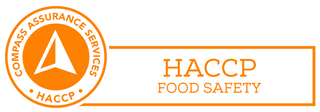Strong Magnets Used In Superconductor Experiment
The Australian Nuclear Science and Technology Organisation (ANSTO) is a government funded research and development facility located at Lucas Heights on the edge of Sydney, Australia.
Highly trained staff are dedicated to using nuclear science and technology to advance human knowledge in the fields of medicine, science, industry, commerce and agriculture. ANSTO contacted AMF Magnetics with an order to supply magnets for an experiment conducted with a science class from a local school.
ANSTO agreed to help conduct a scientific experiment with students using superconductors and very strong magnets supplied by AMF. This experiment was unusual and beyond the schools own resources.
This curiously entertaining experiment was videotaped by the students and on the audio track students explain how the underlying laws of Physics apply in this instance. Superconductors are materials which, when cooled to a specific temperature, exhibit no electrical resistance. A phenomenon called the Meissner effect means that in the presence of magnets, a superconductor will set up electric currents near its surface. These surface currents in the superconductor in turn establish their own magnetic field, which cancels the field created by the magnet track below and allows the superconductor to hover. Because the superconductor, in its supercooled state, is an infinite conductor, the superconductor will hover as long as it remains sufficiently cold.
The eye catching vapour trail expressed by the supercooled hovering disc and the fixed magnetic lock attitude it displays was always destined for permanent exhibit in ANSTO's Discovery Centre and helped justify the organisation's participation. ANSTO receives about fifteen thousand visitors a year for a tour of the facility, a little over two thirds of whom are students.
The result demonstrated how an object equipped with a supercooled superconductor could hover above a magnet. This superconductor disc, with a gentle push, could progressively and predictably hover above and along a track or path of powerful magnets that had been laid out in front of it.
To hover is to hang in the air. No matter who or what manages to hover, up until now it has taken a lot of energy or effort to achieve. Humming birds can hover as they siphon pollen from flowering plants, but they need an exhausting, frantic beating of the wings to do it. Some hawks hover, but only in a stiff breeze, and thats cheating.
The cheers that greeted the arrival of hovercraft in the middle of last century soon turned to jeers as the deafening roar of the hover blades and the suffocating clouds of dust scattered onlookers. The jeers turned tears for those paying to refuel these gas guzzling contraptions.
Even mystics or spiritualists who claim to hover or levitate by connection to higher powers (enlightenment) must observe strict excess baggage limits.
This technology is compelling because the hovering over and along the magnetic track wastes so little energy or propulsive effort.
When cooled, superconductors conduct electricity with no resistance, a tantalising possibility for many industries that combat energy losses due to electrical resistance of standard copper wires. The Superconductor technology could have significant benefits for energy storage and transmission. Train travel could also benefit. Rolling stock, assisted by superconductors to hover rather than grind along railway tracks could experience much less friction or resistance. This could greatly reduce rail travel times and energy costs. Unfortunately, superconductors currently known to science require large amounts of energy to keep them cold enough to remain in a superconductive state, but the race is on to discover materials that are superconductive at room temperature. In a world where methods of generating energy and saving energy is front and centre stage, the potential of superconductors is being keenly examined and explored.




